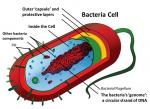|
This section contains 677 words (approx. 3 pages at 300 words per page) |

|
Attractants and repellents are compounds that stimulate the directed movement of microorganisms, in particular bacteria, towards or away from the compound. The directed movement in response to the presence of the attractant or repellent compound is a feature of a bacterial behavior known as chemotaxis.
Various compounds can act as attractants. Overwhelmingly, these are nutrients for the bacterium. Attractant compounds include sugars, such as maltose, ribose, galactose, and amino acids such as L-aspartate and L-serine.
Similarly, various compounds will cause a bacterium to move away. Examples of repellents include metals that are damaging or lethal to a bacterium (e.g., cobalt, nickel), membrane-disruptive compounds such as indole, and weak acids, which can damage the integrity of the cell wall.
The presence and influence of attractants and repellents on the movement of bacteria has been known for over a century. In the 1880s experiments demonstrated...
|
This section contains 677 words (approx. 3 pages at 300 words per page) |

|


